
College football refers to gridiron football played by teams of student athletes. It was through college football play that American football rules first gained popularity in the United States.
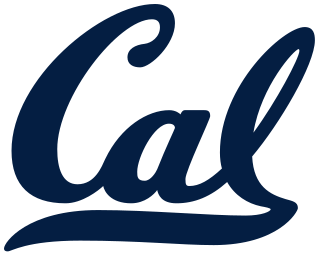
Big Game is the name given to the California–Stanford football rivalry. It is an American college football rivalry game played by the California Golden Bears football team of the University of California, Berkeley, and the Stanford Cardinal football team of Stanford University. Both institutions are located in the San Francisco Bay Area. First played in 1892, it is one of the oldest college rivalries in the United States. The game is typically played in late November or early December, and its location alternates between the two universities every year. In even-numbered years, the game is played at Berkeley, while in odd-numbered years it is played at Stanford.
The Washington Huskies are the intercollegiate athletic teams that represent the University of Washington, located in Seattle. The school competes at the National Collegiate Athletic Association (NCAA) Division I level as a member of the Pac-12 Conference.
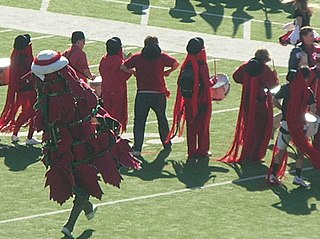
The Stanford Tree is the Stanford Band's mascot and the unofficial mascot of Stanford University. Stanford's team name is "Cardinal", referring to the vivid red color, and the university does not have an official mascot. The Tree, in various versions, has been called one of America's most bizarre and controversial college mascots. The tree regularly appears at the top of Internet "worst mascot" lists but has also appeared on at least one list of top mascots.

The Oregon Ducks are the intercollegiate athletic teams that represent the University of Oregon, located in Eugene. The Ducks compete at the National Collegiate Athletic Association (NCAA) Division I level as a member of the Pac-12 Conference. With eighteen varsity teams, Oregon is best known for its American football team and track and field program, which has helped Eugene gain a reputation as "Track Town, USA". Oregon's main rivalries are with the Oregon State Beavers and the Washington Huskies.

The Tulane Green Wave are the athletic teams that represent Tulane University, located in New Orleans, Louisiana. Tulane competes in NCAA Division I as a member of the American Athletic Conference. There are 14 Green Wave intercollegiate programs, two of which compete outside The American. Beach volleyball and bowling, women's sports that are not sponsored by The American, compete in Conference USA (C-USA).
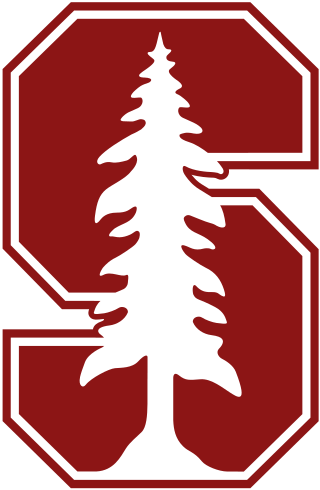
The Stanford Cardinal are the athletic teams that represent Stanford University. As of the summer of 2023, Stanford's program has won 134 NCAA team championships, the most of any university. Stanford has won at least one NCAA team championship each academic year for 47 consecutive years, starting in 1976–77 and continuing through 2022–23. Stanford has won 26 of the 29 NACDA Directors' Cups, awarded annually to the most successful overall college sports program in the nation, including 25 consecutive Cups from 1994–95 through 2018–19. 177 Stanford-affiliated athletes have won a total of 296 Summer Olympic medals, including 26 medals at the 2020 Tokyo games. Stanford's teams compete at the National Collegiate Athletic Association (NCAA) Division I level as a member of the Pac-12 Conference, along with other schools from the western third of the United States.
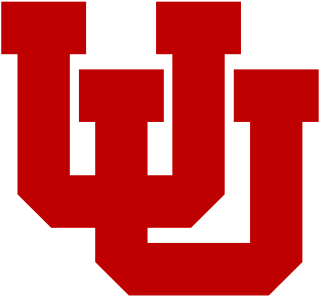
The Utah Utes are the intercollegiate athletics teams that represent the University of Utah, located in Salt Lake City. The athletic department is named after the Ute tribe of Native Americans. The men's basketball team is known as the Runnin' Utes; the women's gymnastics team is known as the Red Rocks

The Ball State Cardinals are the athletic teams that represent Ball State University, located in Muncie, Indiana. The Cardinals are part of the NCAA Division I Mid-American Conference. Charlie Cardinal is the team mascot.

The Stanford Cardinal football program represents Stanford University in college football at the NCAA Division I FBS level and is a member of the Pac-12 Conference's North Division. The team is known as the Cardinal, adopted prior to the 1982 season. Stanford was known as the "Cardinal" for its first two decades of athletic competition, then more commonly as the "Cardinals" until 1930. The name was changed to the "Indians" from 1930 to January 1972, and back to the "Cardinals" from 1972 through 1981. A student vote in December 1975 to change the nickname to "Robber Barons" was not approved by administrators.
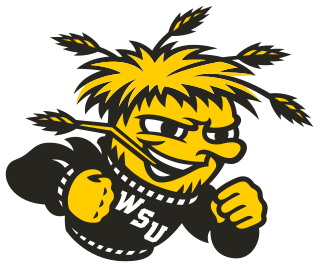
The Wichita State Shockers are the athletic teams that represent Wichita State University, located in Wichita, Kansas, in intercollegiate sports as a member of the NCAA Division I ranks, primarily competing in the American Athletic Conference (AAC) since the 2017–18 academic year. The Shockers previously competed in the D-I Missouri Valley Conference (MVC) from 1945–46 to 2016–17; as an Independent from 1940–41 to 1944–45; in the Central Intercollegiate Athletic Conference (CIC) from 1923–24 to 1939–40; and in the Kansas Collegiate Athletic Conference (KIAC) of the National Association of Intercollegiate Athletics (NAIA) from 1902–03 to 1922–23. As of the 2023 conference realignment, they are one of two schools in the American to have never been a member of Conference USA.

The Arkansas State Red Wolves are the athletic teams of Arkansas State University. They are a member of the Sun Belt Conference in all sports except women's bowling, a sport not sponsored by that league, competing at the National Collegiate Athletic Association (NCAA) Division I level. As of the next NCAA bowling season in 2023–24, the bowling team will compete in Conference USA, which absorbed the single-sport Southland Bowling League after the 2022–23 season.
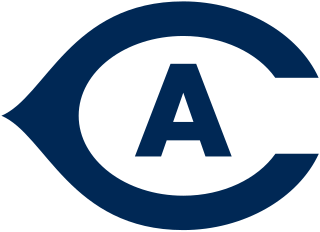
The UC Davis Aggies are the athletic teams that represent the University of California, Davis.
The 1972 Rose Bowl was the 58th edition of the college football bowl game, played at the Rose Bowl in Pasadena, California, on Saturday, January 1. The Stanford Indians of the Pacific-8 Conference upset the undefeated and fourth-ranked Michigan Wolverines of the Big Ten Conference by a point, 13–12, repeating as Rose Bowl champions. The Player of the Game was Stanford quarterback Don Bunce.

The Stanford rugby teams of 1906 to 1917 represented Stanford University as the school's only football program during those years, replacing American football with rugby union. The school had played American football from 1892 to 1905, but in 1906, concerned with the growing levels of violence in football, Stanford and other universities changed to rugby. Stanford played twelve seasons of rugby, during which it played other college teams, club teams from the United States, Canada, and Australia, as well as the New Zealand national team and Australia national team. Despite the team's success, it became clear that other schools were not adopting rugby in large numbers, and after rival California returned to football in 1915, Stanford faced a limited number of potential opponents; and after a year of playing neither sport officially due to World War I, the school returned to American football in 1919.
The 1972 Stanford Cardinals football team represented Stanford University in the 1972 NCAA University Division football season. Following the departure of head coach John Ralston for the Denver Broncos in early January, defensive backs coach Jack Christiansen was promoted to head coach. Stanford finished at 6–5, but were 2–5 in Pacific-8 Conference play, tied for sixth.
The 1981 Stanford Cardinals football team represented Stanford University in the Pacific-10 Conference during the 1981 NCAA Division I-A football season. Led by second-year head coach Paul Wiggin, the Cardinal had an overall record of 4–7, and played home games on campus at Stanford Stadium in Stanford, California. Ranked in the preseason top twenty, Stanford opened with four losses and dropped six of its first seven games to incur their first losing season since 1963.
The 1919 Stanford football team represented Stanford University in the 1919 college football season.

The Stanford–USC football rivalry is an American college football rivalry between the Stanford Cardinal and the USC Trojans, both members of the Pac-12 Conference and the only private schools in the conference. The two teams first played in 1905 and have met nearly every year since 1919, frequently vying for the conference championship and a berth in the Rose Bowl. Stanford is USC's oldest current rival.














